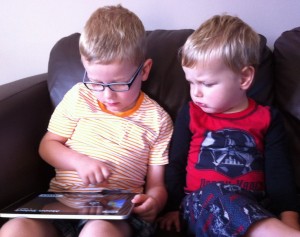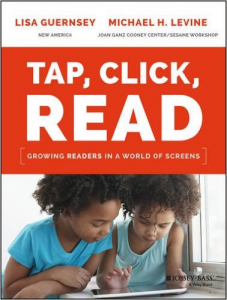 Today’s announcement by the American Academy of Pediatrics and the joint statement of the U.S. Department of Education and the U.S. Department of Health and Human Services on “media use and young minds” is a timely response to a hot debate in parenting and early childhood circles: When and how often should young children use screens?
Today’s announcement by the American Academy of Pediatrics and the joint statement of the U.S. Department of Education and the U.S. Department of Health and Human Services on “media use and young minds” is a timely response to a hot debate in parenting and early childhood circles: When and how often should young children use screens?
For years, the health and child development establishment has advised against exposing toddlers, and babies in particular, to screen media. But daily life has intervened: America’s preschoolers spend between 3-4 hours a day consuming media, ranging from television (still No. 1) to YouTube, and mobile apps. Start with the explosion of touchscreen tablets and apps, add a healthy dose of new ‘i-tot’ products now marketed to parents with young kids, and presto — the new media ball game has parents and educators in a tizzy. We have referred to this phenomenon as the dawn of the Digital Wild West.

The AAP and joint executive agency statements rely heavily on a framework that our colleague Lisa Guernsey at New America has put forth—the importance of the 3 C’s (the Content, Context, and the Child) to move the conversation forward. It is no longer the case that all screen time is created equal. There is a huge difference between parking a child, unsupervised, in front of a tablet for two hours and engaging in the “serve-and-return” interactions that might accompany a family Facetime session, or a field trip to the park, where a camera records each tantalizing flower, bird, or butterfly.
The AAP and the Obama administration now recognize that media use for toddlers, such as video chat with grandparents, may in fact be beneficial and that well designed media such as Sesame Street and PBS offerings have enduring benefits. Most parents and educators have already concluded the same—but this validation may help those who have been wrestling with guilt to settle their nerves. At the same time, what the statement does not do by itself is to create significant new momentum in pushing the field forward—we need to push both industry and policymaker leaders to have a “new think” about these issues. There are tens of millions of dollars being spent on apps and educational media every year, for example, but very little progress in improving the reading and math performance of America’s fourth graders.
 Recently, the Cooney Center and New America published Tap, Click, Read: Growing Readers in a World of Screens, a book that delves deeply into a series of solutions that could help our nation rocket forward beyond the tired debate between those who view technology and media as some sort of magic elixir and those who see it as a harmful distraction. We have created a set of tools for parents, educators, librarians, media developers and policymakers that can be found here. To deploy the modern tools of this generation of technology and media forms, we need policy frameworks like those announced today, for sure. But we also need proactive leadership from our policymakers and professional associations. We are especially struck by the lack of infrastructure to support low-income digital participation and the lack of professional preparation to train educators, librarians, and others in sensibly deploying today’s digital tools. We are also disturbed by the lack of attention to America’s diversity in media products, books and digital games. But, fundamentally, today’s announcement reminds us that we need to support parents and educators to use these new tools more intentionally—because at the end of the day, they are the people who matter most in the lives of our youngest citizens.
Recently, the Cooney Center and New America published Tap, Click, Read: Growing Readers in a World of Screens, a book that delves deeply into a series of solutions that could help our nation rocket forward beyond the tired debate between those who view technology and media as some sort of magic elixir and those who see it as a harmful distraction. We have created a set of tools for parents, educators, librarians, media developers and policymakers that can be found here. To deploy the modern tools of this generation of technology and media forms, we need policy frameworks like those announced today, for sure. But we also need proactive leadership from our policymakers and professional associations. We are especially struck by the lack of infrastructure to support low-income digital participation and the lack of professional preparation to train educators, librarians, and others in sensibly deploying today’s digital tools. We are also disturbed by the lack of attention to America’s diversity in media products, books and digital games. But, fundamentally, today’s announcement reminds us that we need to support parents and educators to use these new tools more intentionally—because at the end of the day, they are the people who matter most in the lives of our youngest citizens.



